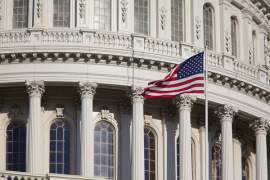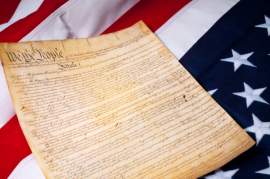
Plessy v. Ferguson

Popular In Constitution
Purpose Of Lifetime Appointment And Pros And Cons Enumerated Powers Bicameral Legislature Background Article 3 Of The Constitution We The People 1st Amendment Who Wrote The Constitution Judicial Review Equal Protection Clause Three Fifths Compromise 10th Amendment 5th Amendment
Plessy v. Ferguson is one of the most important Supreme Court cases, in which the Court held that racial segregation is constitutional under the "Separate but Equal" Doctrine. Justice Henry Billings Brown wrote the Court's opinion, which was voted on 7 to 1.
The Thirteenth Amendment of the U.S. Constitution, adopted in 1865,
states that "Neither slavery nor involuntary servitude...shall exist
within the United States, or any place subject to their jurisdiction". It
goes on to say that Congress has the power to enforce legislature that will
prohibit the use of slavery. After
the phase of Reconstruction came to an end and the Federal troops were
withdrawn from the South, a series of laws known as the Jim Crow laws were put
into effect by southern states.
The Jim Crow laws claimed a "separate but equal" quality for black Americans, but in actuality, blacks were treated unfairly and unequally. Public places, such as schools, restrooms, and methods of transportation, were kept segregated by "whites only" and "blacks only" sections. Although the Thirteenth Amendment abolished slavery, many people, especially Southerners, believed that former slaves were still not considered citizens, and therefore, not guaranteed all the same legal rights as whites.
Congress responded by enacting
the Fourteenth Amendment, which
stated that, "all persons born or naturalized in the United States, and
subject to the jurisdiction thereof, are citizens of the United States and of
the State wherein they reside". The Equal Protection Clause of this Amendment requires the
State to provide equal rights and protection to all people residing within that
State.
Despite the Equal Protection Clause, the Civil Rights Cases of
1883 held that the Fourteenth Amendment restricts only the actions of the Government
and not the acts of individuals or private entities. Therefore, the South
continued to pass laws that kept whites and blacks separated.
In 1890, the State of Louisiana passed a law that required blacks to use separate railway cars that were supposedly equal to those of whites. A group of African Americans in New Orleans formed an association called The Citizens' Committee to Test the Separate Car Act. This group hired a well-known attorney, Albion Tourgee, and staged an act of civil disobedience where Homer Plessy agreed to violate the Separate Cars Act and be arrested.
The Committee carefully staged
the event. Homer Plessy was a light skinned individual who was of African
ancestry. Plessy purchased a railroad ticket for a "whites only" car
and was then arrested when he announced on the train car that he was one-eighth
black and refused to move to the black car.
Plessy sued the State of Louisiana by claiming that the rights
that were guaranteed to him by the Thirteenth and Fourteenth Amendments were
violated. The decision of Judge Ferguson was that the State had the right to
enforce racial segregation in railroad cars. On appeal, this decision was once
again upheld. The Committee appealed again to the United States Supreme Court
in 1896.
The Supreme Court also upheld
the ruling that entitled the State of Louisiana to engage in racial
segregation. The Court did not find that the State had violated the Fourteenth
Amendment and was not technically treating the races differently, but just
keeping them separate. However, in reality, most of the public places that were
designed for blacks were greatly inferior to those designed for whites. Plessy
was forced to plead guilty to the violation and pay a minor fine and the public
facilities remained separated.
The decision in Plessy v. Ferguson further promoted the racial
segregation in the South. States were permitted to enforce the Separate but Equal
Doctrine in public places. Separate but equal is based on the premise that the
facilities are kept in equal condition. However, this was not generally the
case.
The Plessy v. Ferguson decision began affecting public institutions immediately. Funding for educational institutions was far less for African Americans. States that had initially not participated in racial segregation began passing this legislation, and much of the progress made during Reconstruction was reversed. The Separate but Equal law stood until it was finally reversed in 1954 in the Brown v. Board of Education decision.
NEXT: Standard Oil Co. of New Jersey v. United States



















